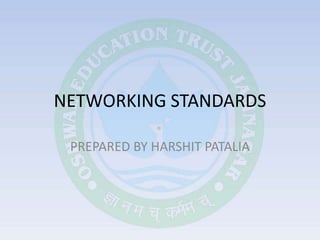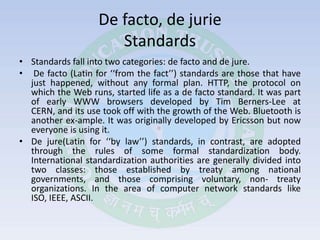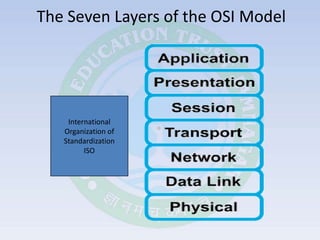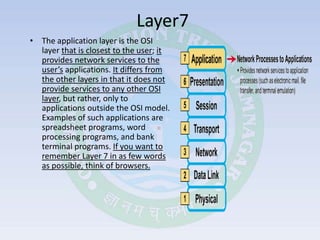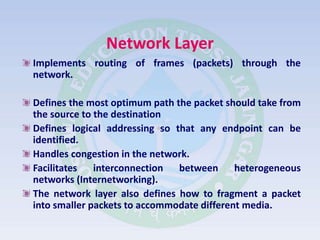The document discusses networking standards and protocols. It describes de facto and de jure standards, with de facto standards arising organically without planning and de jure being formally adopted. It then details the seven layers of the OSI model and their functions, from the physical layer dealing with signals and media up to the application layer interacting with user applications. It also discusses encapsulation of data moving through the layers, TCP/IP model, and common protocols like TCP, IP, and Ethernet.
